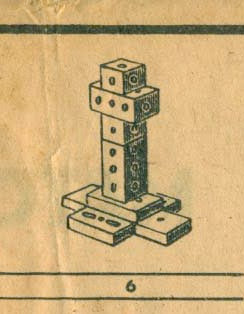There's spam, and then there's spam so oddly written it's somewhat amusing. Here's a roundup of some of the "best" comments I received this month from spambots around the world.
Non sequiter plus ultra
- I read this post completely about the resemblence of most recent and preceding technologies. It's an amazing article. [This in response to a review of some Dvorak piano trios.]- Hi, its good piece of writing concerning media print, we all be familiar with media is a great source of data. [Again, the post was about Dvorak piano trios.]
- Thanks for your marvelous posting?! I certainly enjoyed reading it, you may be a great author. [I may very well be -- but how would I know?]
Lumbering along goes on
My short post about small vintage Japanese tinplate toy (The Straco Layout, Part 23 -- Lumbering Along) continues to be popular among the spambots. Clearly, it's not the content that's attracting them.- thank you for the good writup. It in fact was a amusement account it. Look advanced to more added agreeable from you. [I'm all about adding agreeable.]
- What I don't understood is if truth be told you've no longer actually much more smartly-favored than you may be right now. [You mean I'm past my prime smartly-favored-wise?]
- It's like your read my mind! You appear to know a lot about this, like you wrote the book in it or something [Or something.]
RE: Fastidious
No comments used -- or rather, misused -- the word fastidious this month. But the comments to my post Fastidious Spam more than made up for that lack.- these are really enourmous ideas in regarding blogging. You have touched some pleasant factors here. [Nothing pleasant about the mis-use of "fastidious," bub.]
- great points altogether, you just won a emblem new reader [I wonder what an emblem new reader is.]
Awesome! Its really remarkable paragraph [Which one? The post had seven.]
Pretty section of content. [Yes, just gorgeous.]
You can definitely see your expertise within the work you write. the world hopes for more passionate writes like you who are not afraid to say how they believe. [I'm not afraid. Misuse the word "fastidious" and I'll tell the world.]
That's all for this month. Try to touch only pleasant factors, and remember -- you, too, may be a great author.








































